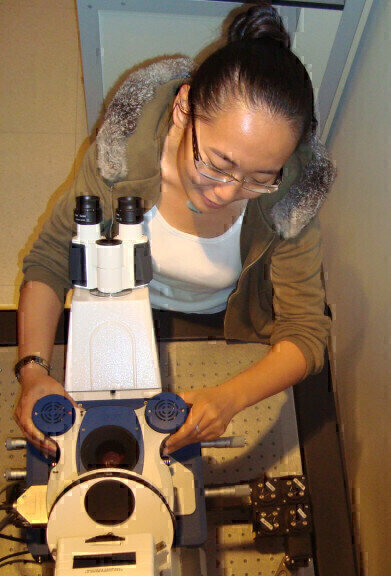Microscopy & microtechniques
Report on the use of Tip Assisted Optics to Characterise Biomolecular Hydrogels
Dec 21 2012
CIC biomaGUNE is a non-profit research organisation created in 2006 to promote scientific research and technological innovation at the highest levels in the Basque Country. Dr Ralf Richter leads Laboratory 3 in the Biosurfaces Research Unit applying a number of techniques for surface nanostructure characterisation and biofunctionalisation to guide the assembly of molecules down to the nanometer-scale. For this characterisation, his group has developed a toolbox of biophysical in-situ techniques including a quartz crystal microbalance with dissipation monitoring (QCM-D), atomic force microscopy (AFM), reflection interference contrast microscopy (RICM), ellipsometry and fluorescence methods. The current research work is centred on biomolecular hydrogels, a broad class of materials that are produced in the human body or by other bioorganisms.
Dr Richter's group develops methods to re-create these specialised natural hydrogels through the controlled assembly from their molecular components in vitro. Functionalised surfaces are used to guide the self-assembly process.
While AFM is used to obtain nanoscale topographic information about the self-assembled architecture of the materials created, AFM is also used to quantify the mechanical properties of these hydrogels. Dr Richter explained: "We employ colloidal probe AFM. When analysing polymer films, a fundamental problem in colloidal probe AFM experiments is to determine the distance at closest approach between the probe and the substrate on which the film is deposited. In a study published earlier this year (Attili & Richter, Langmuir, 2012, 28:3206) we have overcome this problem by combining optical interferometry (RICM) and AFM in situ. With the combined setup, forces and absolute distances between substrate and probe can be measured at the same time. Thanks to its tip-assisted optics (TAO™) module and the integration of high-resolution optical microscopy, the combination of RICM and AFM can be readily setup with the JPK NanoWizard® system. By using our toolbox of techniques, we are able to combine their results to produce a very detailed picture about the physico-chemical properties and dynamics of the films of interest."
He continued: "I have worked with NanoWizard systems since 2005. The combination of high resolution optical and atomic force microscopy is critical for the combination of AFM and RICM. Here, the tip-assisted optics (TAO) module is also very useful. It keeps the colloidal probe in the centre of the optical image, while probing different spots on the same surface."
Digital Edition
Lab Asia Dec 2025
December 2025
Chromatography Articles- Cutting-edge sample preparation tools help laboratories to stay ahead of the curveMass Spectrometry & Spectroscopy Articles- Unlocking the complexity of metabolomics: Pushi...
View all digital editions
Events
Jan 21 2026 Tokyo, Japan
Jan 28 2026 Tokyo, Japan
Jan 29 2026 New Delhi, India
Feb 07 2026 Boston, MA, USA
Asia Pharma Expo/Asia Lab Expo
Feb 12 2026 Dhaka, Bangladesh

.jpg)
-(2).jpg)
















